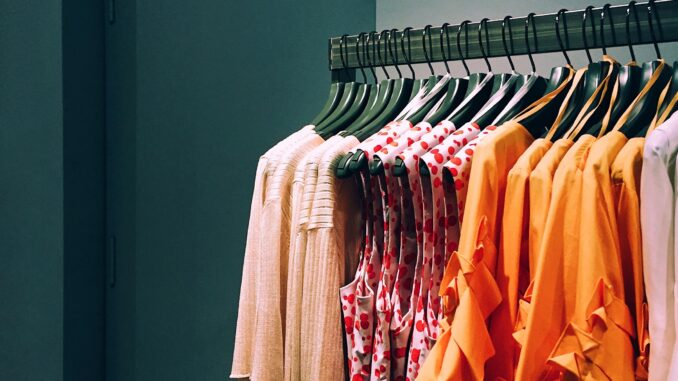
OPINION
By JO EARLY
Online Editor
The strawberry dress. The knit dress. Cow print fuzzy bags. Chunky resin rings. These were just a few of the micro-trend fashion hits of 2021, and now they’re yellow-tagged 50% off at the local thrift store.
Micro-trends follow short life cycles, starting with skyrocketing popularity and cliff-diving out of fashion just as quickly while macro-trends tend to last much longer, 5 to 7 years and usually mark decades.
Shoulder pads through the 80s, baggy denim for the 90s and in the 2000s, low-rise jeans. These clothes are built with high-quality material, often in solid colors or neutral patterns, meant to mix and match.
Through most of human history, the average person didn’t have as diverse a wardrobe as we can afford today, only commissioning a new suit or dress once a season. Today, with fast-fashion websites like Shein offering hundreds of new pieces a day, the supply is surpassing demand.
Today, expression is one of the few joys we can afford. Rainbow hair colors and tattoos are no longer taboos in the workplace and though micro-trends are cheap, the cost of fast-fashion is high.
It takes 2,700 liters of water to produce the cotton for one t-shirt. The fashion industry accounts for 10% of global carbon emissions and the U.S. alone sends 21 billion pounds of textiles to landfills each year, most of which is not biodegradable.
So how does one stay fashionable and sustainable? I have a few pointers.
First, get to know your own personal style. When I see a micro-trend on my feed, I know within seconds if I’m going to wear it and wear it often.
Second, invest in staple pieces. Simple, solid and high-quality pieces like skirts and jeans that will pair well with new things and stay in your wardrobe for years.
Third, work on your thrifting and sewing skills. You’ll often find pieces that just need a dart here or a patch there to become new and cute again.
You can shop fast-fashion. I do too. My favorite skirt cost me four dollars on Shein. With a strong sense of personal style and some thrifted supplemental staples, it’s possible to be stylish and sustainable.

Leave a Reply